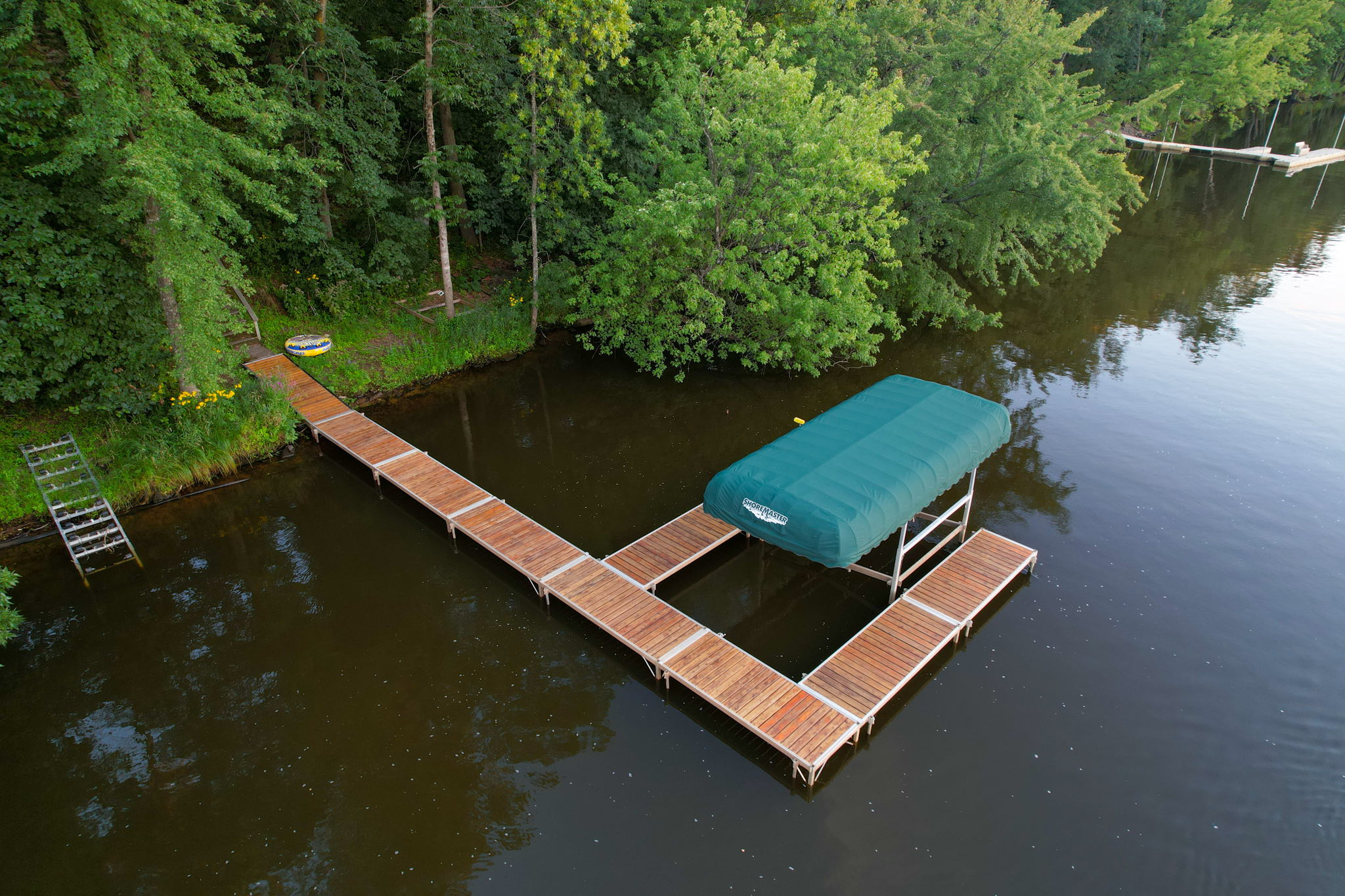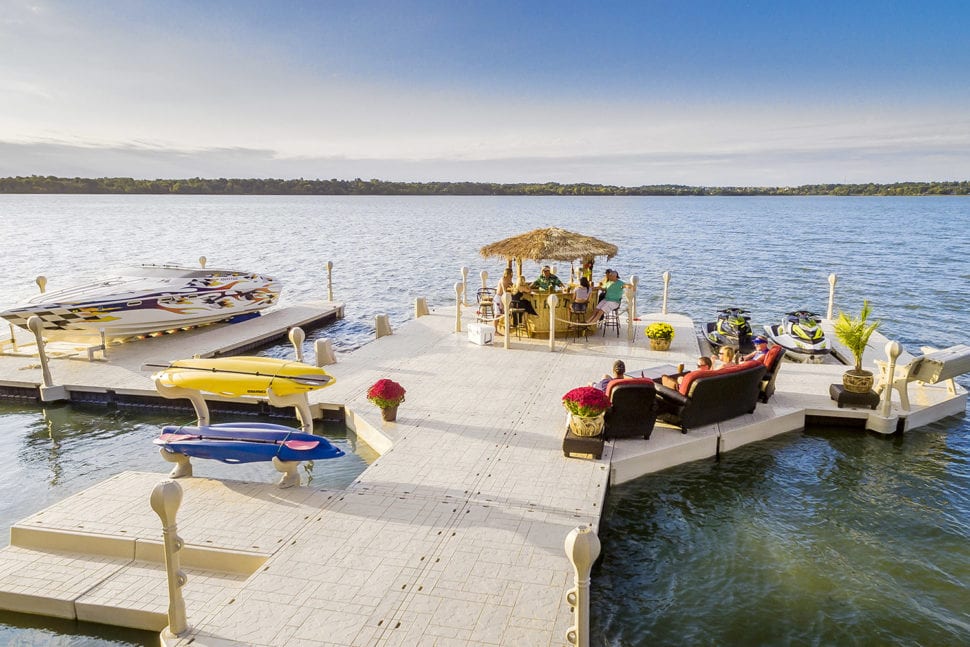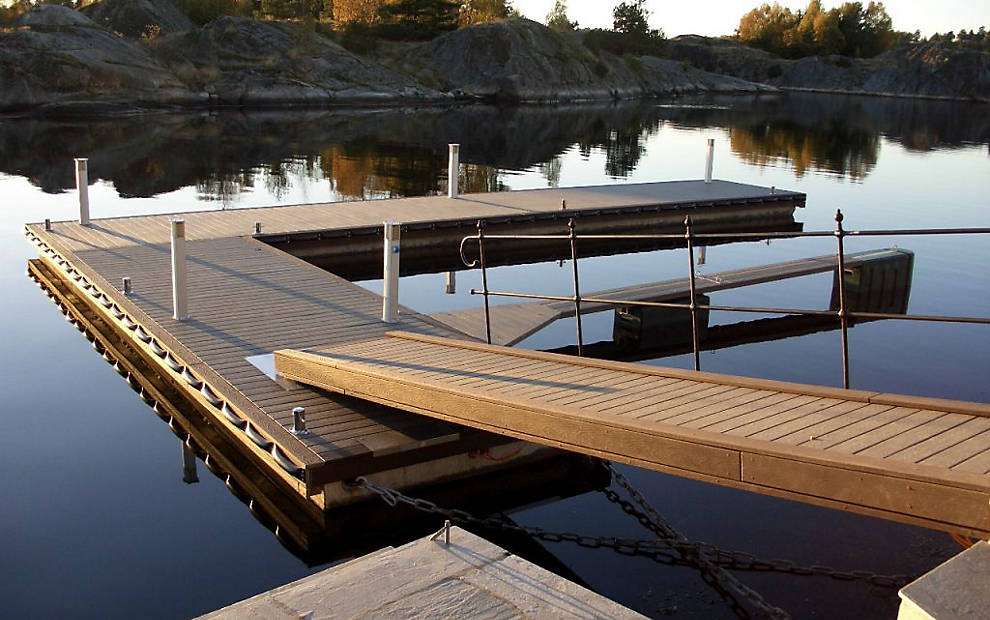Upgrade Your Waterside With Long Lasting Floating Docks
Updating your waterfront with sturdy floating docks can significantly enhance both functionality and looks, supplying a versatile service for different water activities. These structures are made to adapt to ever-changing water levels, making certain safety and security and ease of access throughout the periods. With a series of products available, consisting of low-maintenance alternatives and standard timber, selecting the appropriate dock can complement your individual style and meet practical demands. Understanding the nuances of installation and upkeep is crucial for guaranteeing longevity and performance. When making this investment?, what variables should you think about.
Benefits of Floating Docks
Floating docks deal a plethora of advantages that boost their allure for numerous maritime applications. Unlike conventional set docks, floating docks rise and loss with the tide, guaranteeing regular ease of access for watercrafts and watercraft no matter of ecological problems.
Furthermore, floating docks are easier to mount and transfer, offering flexibility for momentary or seasonal use. Their modular layout enables personalization to fit particular needs, whether for private marinas, household waterfronts, or industrial applications.
Additionally, floating docks produce minimal disruption to the aquatic setting, protecting regional communities and decreasing the chance of erosion. They likewise offer boosted security and security for individuals, as their buoyant nature offers an extra forgiving surface than stiff structures.
In addition, floating docks can promote a varied variety of tasks, such as angling, swimming, and recreational boating, making them a useful possession for waterside development. Their versatility and functionality make floating docks a favored choice for a range of marine projects.
Picking the Right Products
Selecting proper materials for floating docks is crucial to their durability, efficiency, and general performance. When picking materials, think about factors such as ecological direct exposure, maintenance needs, and structural honesty. Common materials consist of timber, plastic, light weight aluminum, and composite alternatives, each offering distinctive advantages and drawbacks.
Timber, while visually pleasing, requires normal maintenance to avoid rot and decay. Pressure-treated timber can boost longevity, however it may still surrender to water damage over time. Plastic floats, usually made from high-density polyethylene, are immune to corrosion and call for very little maintenance, making them an eye-catching selection for low-maintenance applications.
Aluminum is an additional sensible choice, known for its toughness and light-weight properties. It is resistant to rust and can endure rough climate condition, although it may be extra expensive than various other products. Compound products combine the most effective qualities of timber and plastic, offering a durable and low-maintenance option that simulates the appearance of timber without the linked downsides.
Ultimately, the choice of material should straighten with the meant usage, ecological considerations, and spending plan restraints, making sure a sturdy and functional floating dock that fulfills your particular requirements.
Installation Process Summary
The successful installation of a floating dock depends on cautious planning and implementation, guaranteeing that it runs successfully in its designated atmosphere. The very first step entails evaluating site problems, including water deepness, shoreline features, and prevailing climate patterns, which will educate the dock design and anchoring system.
Adhering to the site evaluation, the following stage is to prepare the floating dock parts. This consists of assembling the frame, safeguarding floats, and affixing any kind of needed equipment. It is crucial to guarantee that all connections are waterproof and robust to endure aquatic problems.
Once the dock is constructed, the installment process starts browse around this web-site with positioning the dock in the water. This can involve a crane or various other lifting devices, especially for larger structures. Appropriate positioning is important for functionality and safety.

Upkeep Tips for Longevity
Regular upkeep is necessary for guaranteeing the longevity and optimal performance of a floating dock. To accomplish this, begin with routine evaluations a minimum of see this two times a year, focusing on the honesty of the dock's framework, consisting of the flotation gadgets and connecting hardware. Look for indications of damage, rust, or wear, and resolve any kind of problems immediately to stop more deterioration.
Cleaning is another essential element of maintenance. Eliminate particles, algae, and barnacles from the dock's surface area to protect against unsafe problems and preserve aesthetic appeal. Utilize a soft brush and a light cleaning agent to stay clear of damaging the dock's products.
Furthermore, make sure that the dock is effectively anchored and safeguarded to withstand seasonal changes in water levels and weather. Inspect the anchoring system for stability and make adjustments as needed.
Enhancing Your Exterior Visual
To produce an aesthetically attractive outdoor space, integrating a floating dock can significantly enhance the overall visual of your waterside residential or commercial property. Floating docks are not only practical yet can likewise function as a striking focal point that enhances the natural environments - floating docks. Readily available in various products and styles, these docks can be personalized to match your home's building design and landscape
The addition of ornamental elements, such as integrated lights or stylish barriers, better boosts the dock's aesthetic appeal. Take into consideration using natural timber coatings, which blend effortlessly with the atmosphere, or choosing contemporary materials like aluminum or composite decking that provide a smooth, contemporary look.
Strategically positioning planters or seating areas on or around the dock can develop welcoming rooms that encourage relaxation and pleasure of beachfront views. Furthermore, integrating colors and textures that harmonize with your landscape will certainly produce a cohesive visual throughout your outside area.

Final Thought

Upgrading your waterfront with long lasting floating docks can substantially enhance both performance and looks, giving a functional service for numerous water tasks. Unlike typical set docks, floating docks increase and fall with the trend, guaranteeing consistent accessibility for watercrafts and watercraft regardless of environmental conditions.Selecting suitable products for floating docks is vital to their longevity, efficiency, and total performance.As soon as the dock is put together, the installation process commences with placing the dock in the water.In recap, floating docks offer many benefits, consisting of flexibility to water level modifications and a selection of product alternatives.